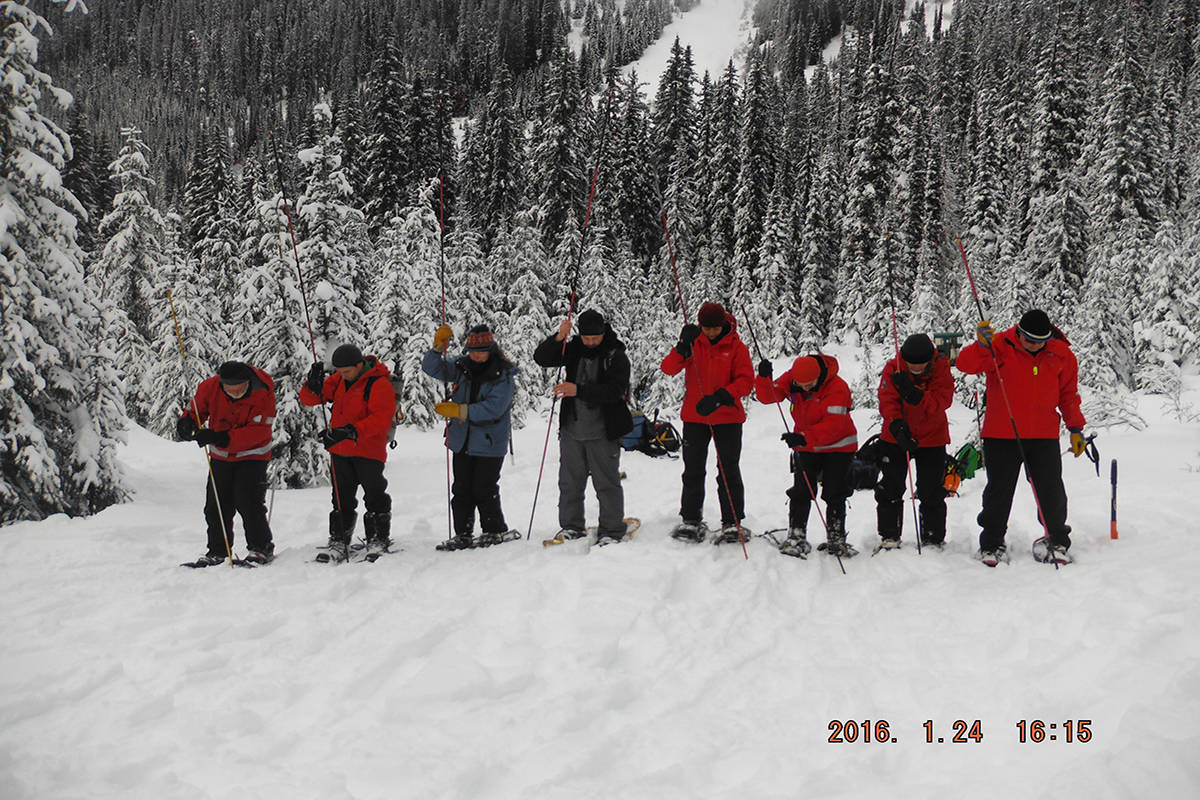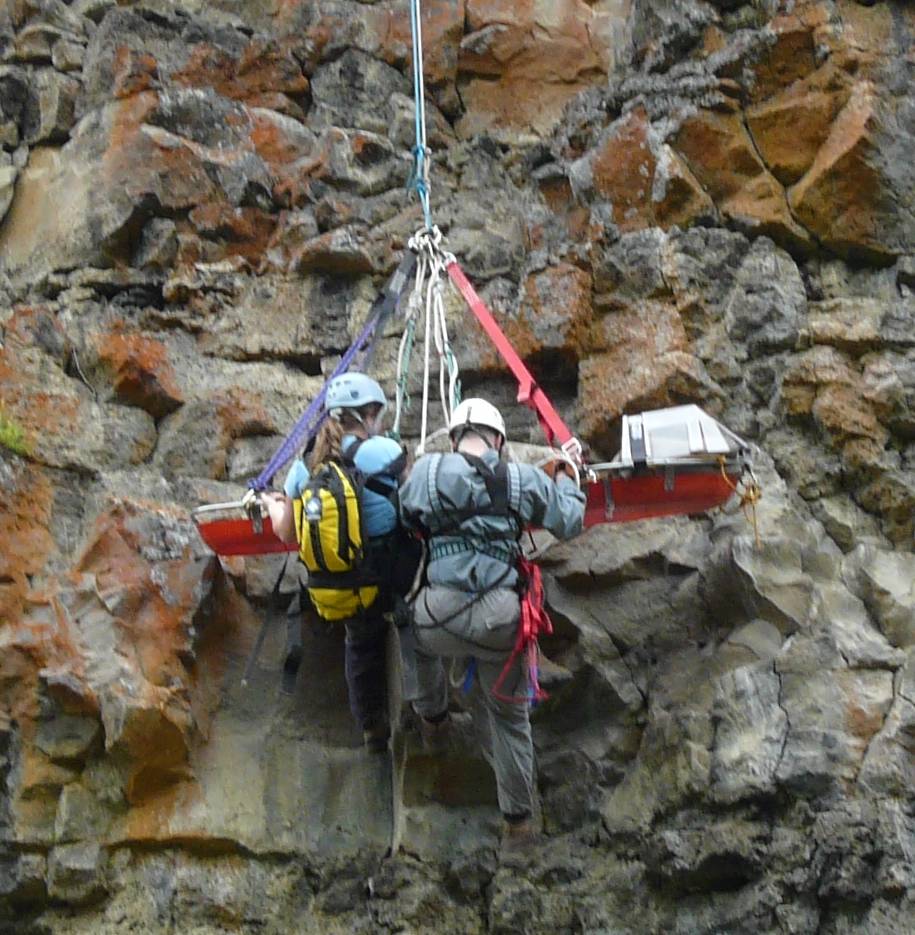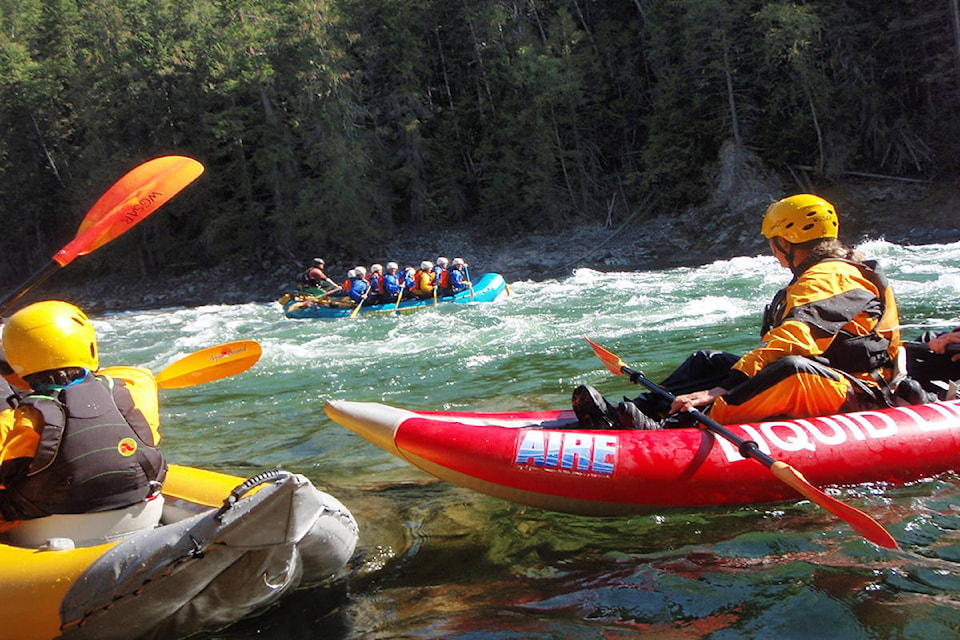You may have seen members of Wells Gray Search and Rescue (WGSAR) stage a training exercise on local trails, a local lake or on the Clearwater River.
Perhaps one knocked on your door with an evacuation alert notice or an evacuation order during the recent fire event.
They’re all volunteers. One of them might even be your neighbour.
After a number of search and rescue groups rose and fell in the 1960s and ’70s, the current WG SAR organization arose about 35 years ago among a small group of volunteers who had taken part in a massive, unsuccessful search for a deaf mute boy missing near Helmcken Falls.
Local volunteers were disappointed at the lack of a local, specialized, professionally trained group of first responders. With the help of recognized professionals they organized themselves as Clearwater Search and Rescue and trained in one or more of four specialties—search management, tracking, technical rescue (rope) and first aid.
They operated under what was then called the BC Provincial Emergency Program (PEP), which was then in its infancy regarding ground search and rescue.
At that time, PEP provided limited funding for training, and for expenses during actual search events.
Otherwise, the local team was self-funded, and equipped itself through community events such as a very popular annual auction of donated items.
Those funds bought equipment such as rope gear, harnesses, stretchers and first aid supplies. In those early days, search equipment such as avalanche probes were home made.
WGSAR no longer has to fund its own training and equipment, and is grateful for generous funding from the Thompson Nicola Regional District, BC Lottery Corporation and provincial government.
The WGSAR’s early headquarters included a portion of the Clearwater fire hall, then later a ramshackle building that was formerly used as a residence for teachers.
About 15 years ago, WGSAR acquired a building that formerly housed the Clearwater offices of BC Hydro, and moved it to its present location on property owned by Freshwater Fisheries Society of BC, across the old highway from Dutch Lake.
The group has since outgrown that building, and plans to replace it with a pre-manufactured, modular 36 ft. x 60 ft. structure, doubling the capacity. The new building will include office space, secure storage, a small workshop, a radio communications centre, and space for classes, meetings, and hands-on training/practice.
The hope is to turn the current building over to a local organization or individual for relocation to a site of their choosing. Interested persons should contact WGSAR.
The new building will be placed on the site of the old one. The cost will be roughly $174,531 for the delivered building, plus about $10,000 for site preparation, surveys, permits, plumbing, electrical work and installation.
While regular funding sources do not ordinarily provide for capital assets such as the headquarters building, WGSAR was happy to receive $104,000 in provincial funding toward its new building. The team is seeking other funding sources to make up the $80,000 difference.
In recent years, WGSAR has increasingly taken a leadership role in developing training programs locally, regionally, and provincewide.
In 2013, the group initiated a biennial rope rescue training event for Southern Interior SAR volunteers. That two-day event hosted two instructors and 33 volunteers from Clearwater and other Southern Interior SAR groups, who trained in rescues from high angle slopes and vertical terrain.
A second event in 2015 hosted 50 SAR volunteers and seven instructors. The 2017 event hosted eight instructors and 66 volunteers from across the province.
WGSAR now has about 24 members, who train in a number of special expertise disciplines set out by Emergency Management BC and the Justice Institute of BC.
Its area of operation runs south to Little Fort, north to Thunder River, half-way to the Cariboou Highway in the west, and east to the Tumtum and Adams Lake drainages—similar to the local RCMP jurisdiction.
Operations include ground search and rescue, swift water rescue, rope rescue, ice rescue, avalanche rescue, incident command, as well as civil evacuation in such events as floods and fires. Public outreach activities include “hug a tree,” school visits, Adventure Smart, scouts and girl guides.
The group also supports the Wells Gray Outdoors Club and the Wells Gray Amateur Radio Club, and provides traffic control for events such as the annual fireworks display.
Member volunteers have donated more than 3,600 hours in the last year alone, and responded to almost two dozen call-outs and other events.


